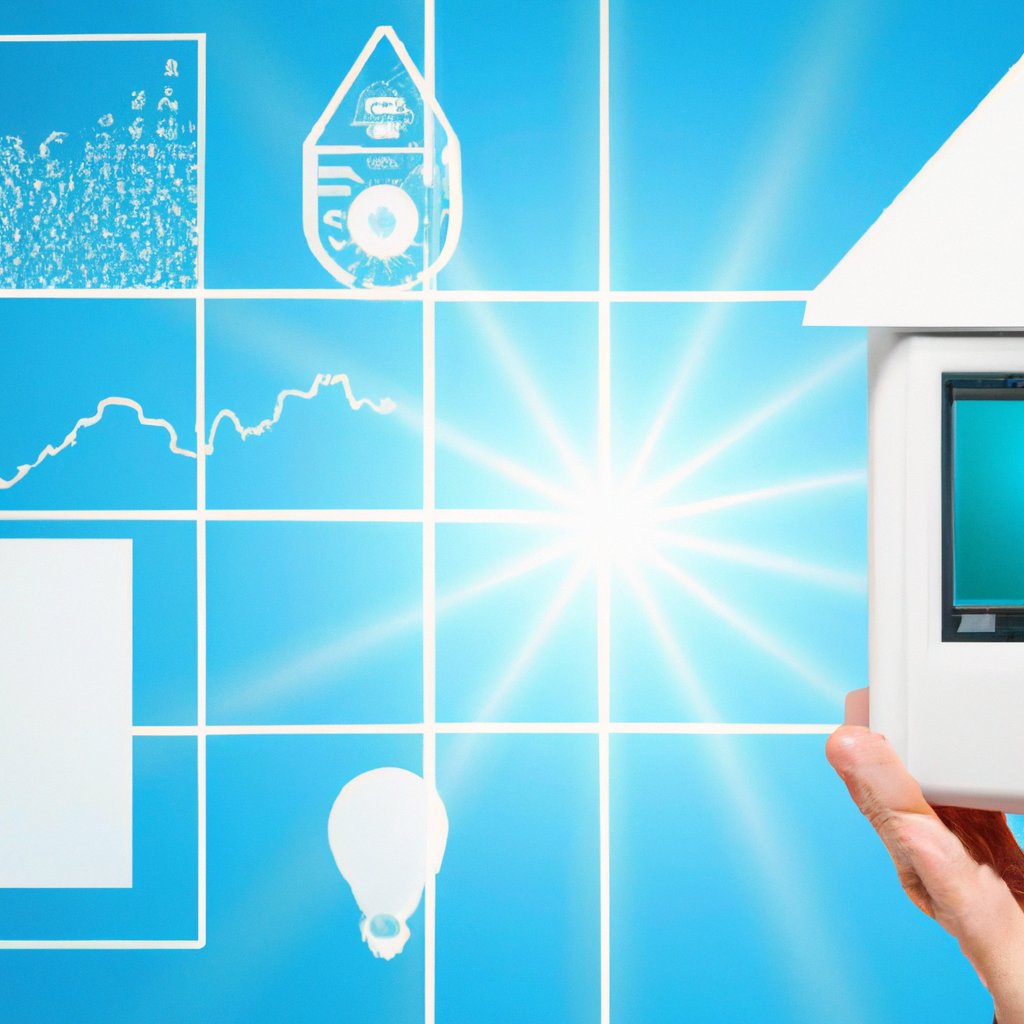Imagine living in a home where the lights automatically turn on as you walk into a room, the thermostat adjusts itself to your preferred temperature, and your favorite playlist begins to play as soon as you enter. Sounds like a dream come true, right? While smart homes offer incredible convenience and comfort, they also come with their fair share of security and privacy concerns. From the potential for hackers gaining access to your personal information to the possibility of unauthorized access to your home, it’s crucial to understand the risks that come with this emerging technology. In this article, we will explore the security and privacy concerns of smart homes, empowering you to make informed decisions to ensure the safety of your home and data.

Data Security
Overview of data security concerns
Data security is a crucial aspect of smart homes as it involves the protection of sensitive information from unauthorized access, use, disclosure, disruption, modification, or destruction. With the increasing adoption of connected devices and the Internet of Things (IoT), smart homes have become potential targets for data breaches. Ensuring the security of data in a smart home is essential to protect personal information, maintain privacy, and prevent potential harm.
Types of data vulnerable to security breaches
Smart home devices gather a wealth of data, including personal and sensitive information. This can include biometric data, such as fingerprints or voice recordings, as well as personal preferences, usage patterns, and even financial details. Any breach of this data can have serious implications, ranging from identity theft to unauthorized access to smart home systems. It is crucial to recognize the potential vulnerabilities and take appropriate measures to safeguard this data.
Methods for securing smart home data
To enhance data security in smart homes, several methods can be implemented. First and foremost, ensuring strong encryption protocols, such as Secure Sockets Layer (SSL) or Transport Layer Security (TLS), can protect data during transmission and storage. Regular software updates for all devices should be prioritized to address any security vulnerabilities. Implementing strong and unique passwords, enabling two-factor authentication, and utilizing secure networks can provide an additional layer of protection. It is also essential to be mindful of the data collected by devices and the permissions granted to third-party services.
Device Vulnerabilities
Common vulnerabilities of smart home devices
Smart home devices often have unique vulnerabilities that malicious actors can exploit to gain unauthorized access or control. These vulnerabilities can include weak default passwords, outdated firmware, and insecure communication protocols. Additionally, many smart devices lack adequate security controls or fail to prioritize security during the design and development stages. As a result, these devices become potential entry points for cybercriminals.
Importance of regular software updates
Regularly updating the software and firmware of smart home devices is crucial to address known vulnerabilities and protect against potential threats. Software updates often include security patches and bug fixes that enhance the overall security of devices. Neglecting these updates can leave devices exposed to known exploits, increasing the risk of unauthorized access and data breaches. It is essential to regularly check for and install updates provided by device manufacturers to maintain a secure smart home environment.
Securing IoT devices
Securing Internet of Things (IoT) devices in a smart home requires implementing several key measures. First, it is important to change default passwords upon device setup to prevent unauthorized access. Utilizing strong and unique passwords, along with enabling two-factor authentication, adds an extra layer of protection. It is also advisable to disable any unnecessary features or services that may increase the attack surface. Regularly monitoring device activity, implementing network segmentation, and utilizing firewalls and intrusion detection systems can help detect and prevent potential threats.
Unauthorized Access
Risks of unauthorized access to smart home systems
Unauthorized access to smart home systems poses significant risks that can compromise privacy, security, and even physical safety. Once an attacker gains access, they can potentially manipulate or control connected devices, monitor activities, gather personal data, and even disrupt essential functionalities within the home. This intrusion can not only lead to privacy violations but also create opportunities for physical harm or theft.
Preventing unauthorized access
Preventing unauthorized access to smart home systems should be a top priority. One effective measure is to establish strong and unique passwords for all devices and accounts associated with the smart home. Utilizing two-factor authentication provides an additional layer of security by requiring a secondary verification method. Regularly monitoring device activity and promptly addressing any suspicious behavior or unauthorized access attempts are also crucial. Reviewing and adjusting privacy settings and permissions granted to third-party services can help minimize the risk of unauthorized access.
Password and authentication best practices
Implementing strong and secure passwords is essential to prevent unauthorized access. Passwords should be complex, unique, and not easily guessable. They should consist of a combination of uppercase and lowercase letters, numbers, and special characters. Avoid using common words or personal information that can be easily associated with you. It is advisable to use a password manager to securely store and generate strong passwords. Additionally, enabling two-factor authentication adds an extra layer of protection by requiring a secondary verification method, such as a unique code sent to a mobile device.
Cyberattacks
Types of cyberattacks on smart homes
Smart homes are susceptible to various cyberattacks, including malware infections, phishing attempts, ransomware attacks, and botnet infiltrations. Malware can be injected into smart home devices, compromising their integrity and allowing unauthorized access. Phishing attempts often target users through deceptive email or messages, attempting to trick them into revealing sensitive information. Ransomware attacks can encrypt smart home device data, rendering them unusable until a ransom is paid. Botnets can take control of multiple IoT devices, using them to carry out coordinated attacks or mining cryptocurrencies.
Recognizing and preventing cyberattacks
Recognizing the signs of a cyberattack is crucial in minimizing potential damage. Signs may include sudden changes in device behavior, unexplained data usage, and suspicious network activity. It is important to educate yourself about common cyberattack techniques and be cautious of unsolicited emails, messages, or downloads. Implementing security measures such as firewalls, antivirus software, and intrusion detection systems can help prevent and detect malicious activities. Regularly updating device firmware and software, as well as performing regular backups of important data, can also help mitigate the impact of a cyberattack.
Importance of network security
Network security plays a vital role in protecting smart homes from cyberattacks. Smart home devices communicate over networks, making them potential targets for attackers. Implementing strong network security measures, such as using secure Wi-Fi protocols (WPA2 or WPA3) and unique network names and passwords, can significantly enhance security. It is important to secure the home network with a robust firewall and regularly update the router firmware. Creating a separate guest network to isolate smart home devices from personal devices can also help mitigate the risk of unauthorized access.

Data Privacy
Concerns about the collection and usage of personal data
The collection and usage of personal data in smart homes raise significant privacy concerns. Smart home devices often gather a vast amount of data about individuals’ daily routines, behaviors, preferences, and even health-related information. This data can be valuable to companies for targeted marketing or lead to potential abuse if misused or accessed by unauthorized individuals. Users must be aware of the data collected by their devices and understand how it is being utilized.
Safeguarding privacy in smart homes
To safeguard privacy in smart homes, it is important to understand the privacy policies and practices of the devices and services used. Reviewing and adjusting privacy settings to limit data collection and sharing can help minimize the risk of privacy breaches. It is advisable to disable unnecessary features or services that may gather excessive personal information. Regularly monitoring and reviewing the data collected by devices and the permissions granted to third-party services is crucial in maintaining control over personal information.
Compliance with data protection regulations
Smart home users should be aware of the data protection regulations applicable to their region, such as the General Data Protection Regulation (GDPR) in the European Union or the California Consumer Privacy Act (CCPA) in the United States. These regulations aim to protect individuals’ personal data and provide rights and mechanisms for control and transparency. It is important for smart home manufacturers and service providers to comply with these regulations to ensure the privacy and security of user data.
Smart Home Assistants
Privacy risks associated with smart home assistants
Smart home assistants, such as voice-activated virtual assistants, have introduced new privacy risks. These devices often continuously listen for specific wake words or phrases, raising concerns about the storage and use of voice recordings. There have been cases where unauthorized access to voice recordings has occurred, posing a significant breach of privacy for users. Additionally, smart home assistants can transmit personal conversations or inadvertently record sensitive information.
Controlling voice recordings and data sharing
To exert control over voice recordings and data sharing, it is important to review the privacy settings and permissions associated with smart home assistants. Users should consider disabling or muting the microphone when not in use and explore settings that limit data retention or allow manual deletion of recordings. Additionally, it is important to carefully review and understand the privacy policies and terms of service provided by the manufacturers of smart home assistants. Being aware of data sharing practices and the security measures employed by the manufacturers is vital in protecting privacy.
Securing interactions with smart home assistants
Securing interactions with smart home assistants involves implementing additional measures to ensure privacy. Users should change default passwords upon device setup to prevent unauthorized access. Implementing two-factor authentication adds an extra layer of protection, verifying the user’s identity through a separate device or unique code. It is advisable to regularly update the firmware and software of smart home assistants to address any security vulnerabilities. Consistently reviewing and adjusting the privacy settings associated with these devices can help maintain control over personal data.

Third-Party Integration
Security implications of integrating third-party devices
Integrating third-party devices into a smart home environment introduces potential security risks. These devices might have their own vulnerabilities or may require the sharing of sensitive data with third-party providers. If not appropriately vetted, these devices can become a weak point in the overall security of the smart home ecosystem. It is essential to carefully consider the security implications before integrating third-party devices.
Vetting third-party providers for security
Vetting third-party providers for security is crucial to ensure the safety and privacy of smart home data. It is important to research and choose reputable and trusted companies that have a proven track record of prioritizing security. Reviewing the security practices and privacy policies of third-party providers can provide valuable insights into their commitment to data protection. Evaluating the quality of their encryption protocols, their access controls, and their data handling practices can help determine their suitability for integration within a smart home environment.
Limiting data sharing with third-party services
To minimize the risks associated with third-party integration, it is advisable to carefully review the permissions and data sharing practices of these services. Limiting the data shared with third-party providers to only what is necessary and ensuring that the data is handled securely is important. Additionally, regularly reviewing the connected third-party services and removing those that are no longer required or trusted can help maintain a more secure smart home environment.
Physical Security
Securing physical access to smart home devices
Physical security is a critical aspect of securing smart home devices. Unauthorized physical access to devices can allow attackers to tamper with settings, install malware, or even physically remove devices from the premises. It is important to ensure that smart home devices are placed in secure locations within the home, limiting physical accessibility to them.
Protecting against theft and tampering
Protecting smart home devices from theft and tampering involves implementing various measures. Storing devices in locked cabinets or secure areas can help prevent unauthorized access. In cases where devices are mounted or fixed, using tamper-resistant hardware or locking mechanisms can deter tampering. It is advisable to register devices, record serial numbers, and keep copies of purchase receipts to aid in recovery or identification in case of theft.
Importance of robust home network security
Robust home network security is vital in securing smart home devices physically. Implementing strong network security measures, such as using secure Wi-Fi protocols, creating unique network names and passwords, and regularly updating router firmware, helps prevent unauthorized access to devices. Securing the home network with a robust firewall, segregating IoT devices from personal devices, and utilizing network monitoring tools can provide additional layers of protection against unauthorized physical access.

Privacy in Shared Spaces
Privacy concerns in multi-user smart home environments
In shared smart home environments, such as households with multiple occupants or communal spaces like apartments or dormitories, privacy concerns become more complex. The potential for unauthorized access to personal data or the inadvertent sharing of sensitive information is heightened when multiple individuals have access to smart home devices. It is crucial to address privacy concerns in these scenarios to ensure the comfort and security of all occupants.
Implementing user access controls
Implementing user access controls is essential in multi-user smart home environments. This can involve creating separate user accounts for each individual, limiting access and permissions based on user roles, or utilizing voice recognition for personalized interactions. Educating and establishing clear guidelines for all users regarding privacy, device usage, and data handling can help minimize privacy risks and ensure smooth cohabitation within a shared smart home environment.
Separating personal data in shared spaces
Separating personal data in shared spaces is important to maintain privacy and prevent unauthorized access. By using dedicated storage areas or folders for personal usage and ensuring that devices are configured to separate individual user data, the risk of accidental data sharing or unauthorized access is reduced. Additionally, regularly reviewing and adjusting user permissions and access controls can help ensure that personal data is only accessible by authorized individuals within the shared space.
Legal and Ethical Implications
Legal considerations in smart home security and privacy
Smart home security and privacy have legal implications that must be considered. Data protection laws, such as the GDPR in the European Union, require measures to protect individuals’ personal data and provide rights and mechanisms for control and transparency. Smart home manufacturers must comply with these laws to avoid legal consequences and safeguard user privacy. Additionally, laws regarding surveillance, audio recording, or data retention may have specific requirements that must be adhered to within a smart home environment.
Ethical responsibilities of smart home manufacturers
Smart home manufacturers have an ethical responsibility to prioritize security and privacy in their products. This includes designing and developing devices with security in mind, regularly updating and patching vulnerabilities, and being transparent about data collection and usage practices. Manufacturers should prioritize user privacy and provide clear and accessible privacy settings to enable users to make informed decisions about their data.
Transparency and user consent
Transparency and user consent are fundamental aspects of smart home security and privacy. Users must be informed about the data collected by their devices, how it is used, and any third parties that may have access to it. Manufacturers should provide clear, understandable privacy policies and terms of service, and regularly update users about any changes. Obtaining explicit and informed consent from users before collecting or sharing their data is crucial to respect their privacy and ensure compliance with ethical standards.
In conclusion, smart homes offer convenience, efficiency, and automation, but they also come with security and privacy risks. Understanding and addressing these concerns is paramount to ensure the protection of personal data, maintain privacy, and prevent potential harm. By implementing secure practices, regularly updating devices, and exercising caution in third-party integrations, users can create a safer and more private smart home environment. Manufacturers also have a responsibility to prioritize security, provide transparent privacy practices, and comply with legal and ethical obligations. With proper attention to security measures and informed decision-making, smart homes can be enjoyed without compromising privacy or risking unauthorized access.











